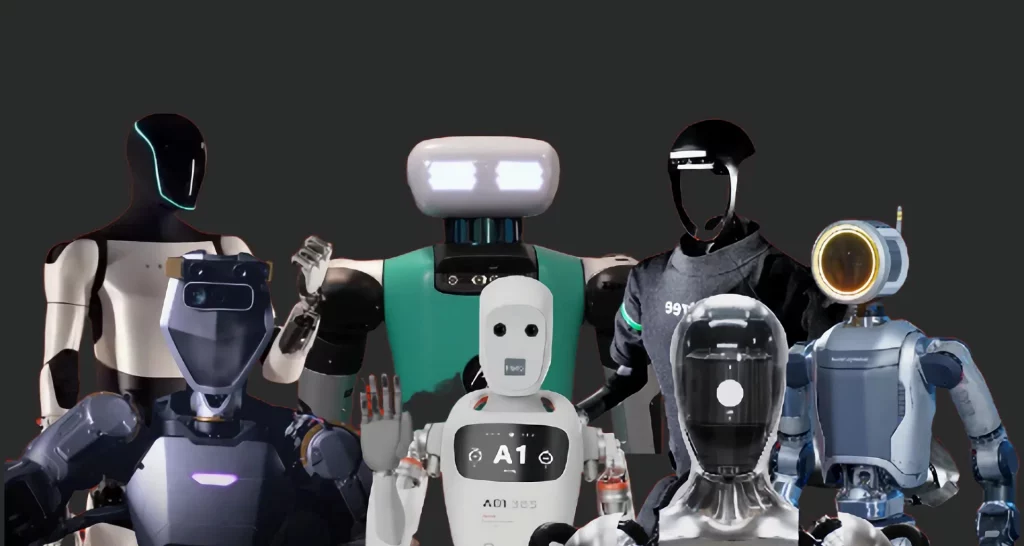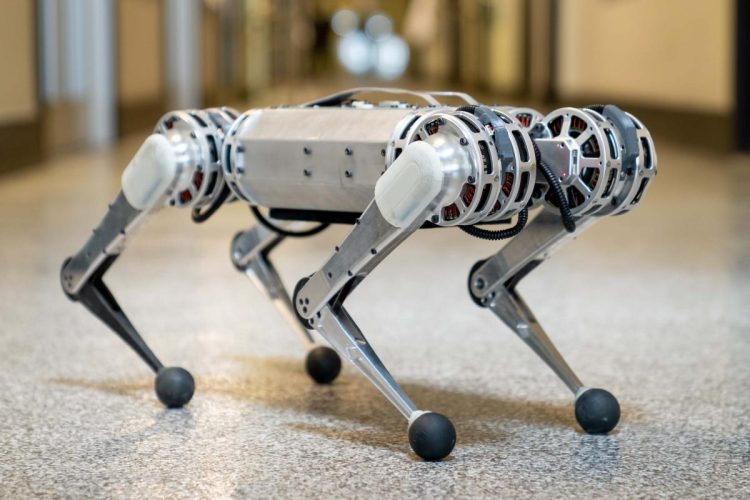1. Introduction to Biomimetic Robotics
Biomimicry, or the design and development of systems based on the structures, functions, and principles observed in nature, has become a powerful paradigm in engineering. In the context of robotics, biomimetic robots aim to replicate or draw inspiration from the movements, behaviors, and structures of living organisms. These robots exhibit behaviors, such as walking, crawling, swimming, or flying, similar to those of animals and insects. The ultimate goal is to build robots that are efficient, adaptive, and resilient, much like the creatures in the natural world.
One of the key advantages of biomimetic robots lies in their ability to navigate complex, unpredictable environments. By imitating natural organisms, these robots can handle tasks that conventional robots, often limited by rigid forms and mechanisms, cannot perform. For example, soft robots that mimic the malleability and adaptability of biological organisms can access tight spaces and perform delicate tasks.
This field is multifaceted, encompassing a wide range of research from the development of robotic limbs inspired by human anatomy to underwater robots that replicate the swimming mechanisms of fish. The applications of biomimetic robots extend into various domains, including medical surgery, search and rescue, environmental monitoring, and even entertainment.
2. Core Research Areas in Biomimetic Robotics
2.1 Imitating Locomotion: From Animals to Machines
One of the primary focuses of biomimetic robotics is the study of locomotion—the ability to move from one place to another. By mimicking the movement of animals, researchers aim to create robots that can navigate terrain more efficiently and with greater stability than traditional robots.
For instance, the Cheetah Robot developed by Boston Dynamics mimics the high-speed running of a cheetah, achieving impressive speeds of up to 28.3 miles per hour. This biomimetic approach allows the robot to achieve agility, speed, and flexibility, enabling it to operate in dynamic environments such as urban landscapes or rough terrains. Similarly, snake-like robots, inspired by the sinuous movement of snakes, are designed to slither through tight spaces, making them ideal for rescue operations in collapsed buildings or areas where other robots cannot fit.
2.2 Soft Robotics: Flexibility and Adaptability
Another crucial area of biomimetic robotics involves the development of soft robots that emulate the flexibility and compliance of biological tissues. Unlike rigid robots, soft robots are made from materials that can deform and adapt to their surroundings, offering a higher degree of interaction with delicate objects or hazardous environments.
For example, the Octopus-Inspired Robot replicates the flexible and adaptable limbs of an octopus, enabling it to manipulate objects, explore underwater environments, or even perform minimally invasive surgeries. The soft nature of the robot’s design allows it to compress, stretch, and twist, offering unprecedented dexterity in tasks that require fine motor skills.
Soft robots also have a profound impact on medical applications, where they can be used in surgery, rehabilitation, or diagnostics. For instance, soft robots modeled after the human tongue or digestive system are capable of moving through small, constrained spaces in the body, providing a safer and less invasive alternative to traditional surgical methods.
2.3 Sensory and Perception Systems: Mimicking Biological Senses
Another research direction focuses on developing robots with sensory systems that mirror the capabilities of living organisms. For example, vision-based robots inspired by the eyes of various animals, such as eagles or mantis shrimps, can detect objects at a greater range and resolution than human eyes. These advanced sensory systems allow biomimetic robots to interact more intelligently with their environment.
In particular, robots that mimic the sensory perception of species like bats or dolphins, which use echolocation to detect objects, are being developed for applications such as autonomous navigation or underwater exploration. These robots can “see” their environment through sound waves, enabling them to operate in environments with low visibility or in areas where traditional vision-based systems might fail.
2.4 Self-Healing Mechanisms
In nature, organisms exhibit the remarkable ability to self-heal after damage, whether it is the regeneration of limbs in certain species or the repair of cellular structures. Self-healing robots aim to replicate this biological phenomenon, ensuring that the robot can recover from damage autonomously, extending its operational lifespan.
Researchers have successfully created soft robots that contain self-healing materials. These robots are resilient and can continue to function even after being punctured or exposed to environmental stressors. For instance, self-healing polymers can restore the structural integrity of the robot’s outer casing, preventing total failure of the system. This feature is particularly useful in environments where repairs are difficult or time-consuming, such as deep-sea exploration or space missions.

3. Applications of Biomimetic Robots
3.1 Medical Applications: Precision and Minimally Invasive Surgery
Biomimetic robots hold significant promise for the medical field, particularly in the realm of minimally invasive surgery and rehabilitation. Soft robots, which are designed to mimic the flexibility of biological tissues, can be used for surgical tasks that require delicate maneuvering inside the human body. These robots can navigate narrow passages, remove tumors, or assist in organ transplants with minimal disruption to surrounding tissues.
For example, robotic arms modeled after the human anatomy allow for precise movements and the ability to hold surgical instruments with high stability. The ability to replicate human-like dexterity and fine motor skills is critical for ensuring patient safety during intricate procedures.
Moreover, robots designed to mimic human limbs are used in rehabilitation to assist patients in regaining mobility and strength. These robots can provide personalized care by adjusting movements based on the patient’s condition, making rehabilitation more effective.
3.2 Search and Rescue Operations: Navigating Complex Environments
In search and rescue missions, biomimetic robots offer distinct advantages over traditional robots. Their ability to navigate challenging environments—such as collapsed buildings, dense forests, or underwater caves—can be greatly enhanced by imitating the movement of animals.
For example, quadruped robots inspired by animals such as dogs or cheetahs can rapidly move over rough terrain, searching for victims trapped in rubble or debris. Snake-like robots can slither into small openings to reach people trapped in confined spaces. By mimicking the behavior and physical structures of animals, these robots can move in ways that would be difficult or impossible for rigid, wheeled robots.
Additionally, some aerial robots, designed to replicate the flight capabilities of birds or insects, are used in search and rescue missions to cover large areas quickly. They can land gently and navigate obstacles in hard-to-reach locations.
3.3 Exploration: Unlocking New Frontiers
Biomimetic robots also have applications in exploration, whether on land, underwater, or in space. In underwater environments, robots inspired by fish or squid can perform tasks such as exploring deep-sea ecosystems, collecting samples, or assisting in underwater construction.
In space exploration, robots that mimic the movement of creatures like caterpillars or spiders could be used to traverse the rocky and unpredictable terrains of planets like Mars or the Moon. The ability of biomimetic robots to adapt to unknown environments and perform a variety of tasks could open up new frontiers in space research and colonization.
4. Challenges in Biomimetic Robotics
Despite the remarkable progress made in the field of biomimetic robotics, several challenges remain.
4.1 Material Limitations
One of the most significant challenges is finding suitable materials that can mimic the flexibility, durability, and resilience of biological systems. While soft robots have demonstrated promise in terms of movement, creating materials that can self-heal or withstand extreme conditions, such as deep-sea pressures or high temperatures, remains a major hurdle.
4.2 Energy Efficiency and Power Sources
Biomimetic robots often require more energy to operate than traditional rigid robots, particularly when they rely on complex movements and soft materials. Developing efficient power sources that can sustain long-duration missions, especially in remote environments like space or deep sea, is critical.
4.3 Autonomy and Control
Biomimetic robots often have to interact with dynamic environments that change unpredictably. Achieving a high degree of autonomy—enabling robots to adapt to unforeseen circumstances without human intervention—remains a significant challenge. Furthermore, fine-tuning the control systems to mimic biological behaviors with high precision is a key research direction.
5. Future Directions
As biomimetic robotics advances, we can expect to see the development of even more sophisticated systems capable of tackling complex real-world tasks. Future biomimetic robots could include:
- Self-repairing robots that can heal themselves in extreme environments.
- Collaborative robots that work alongside humans in workplaces or healthcare settings.
- Highly autonomous robots that can navigate and perform tasks without human input, such as in disaster zones or remote exploration missions.
The future of biomimetic robots holds enormous potential, from improving human life to enabling breakthroughs in scientific discovery. Through continued research and development, biomimetic robots will increasingly mirror the abilities and qualities of nature’s most efficient and adaptive organisms.
6. Conclusion
Biomimetic robots represent the intersection of nature and technology, offering exciting possibilities for a wide range of industries. By studying and imitating the forms, behaviors, and processes found in nature, engineers and scientists can create machines that are not only innovative but also highly efficient and adaptive. Despite the challenges that remain, the future of biomimetic robotics is bright, and its potential to solve real-world problems is virtually limitless.







































